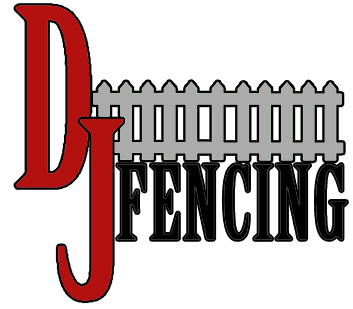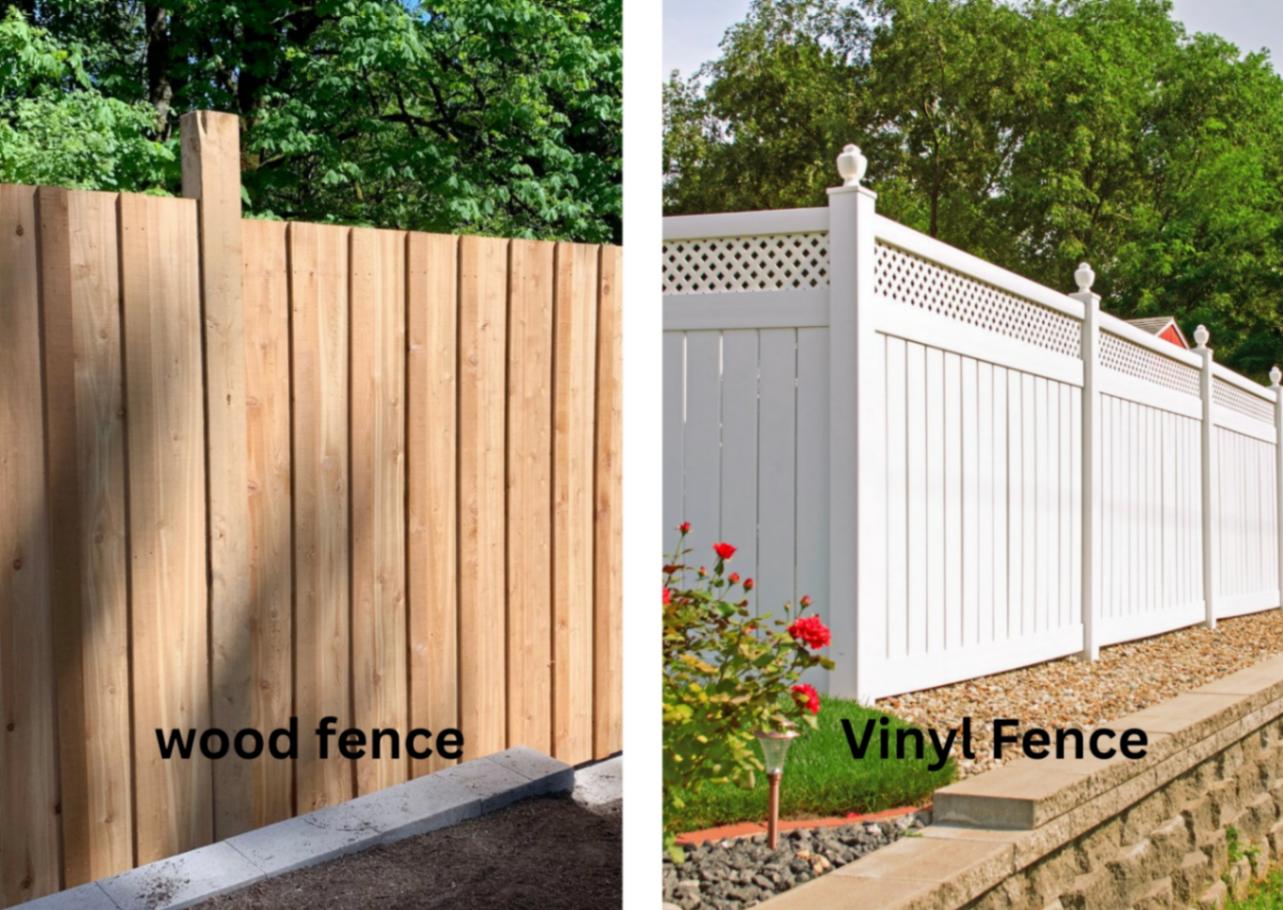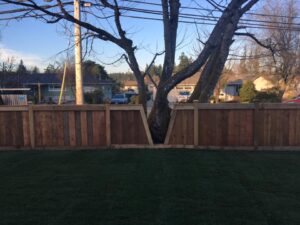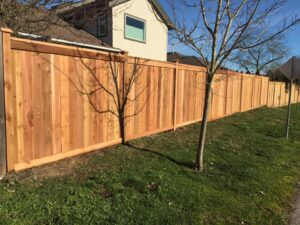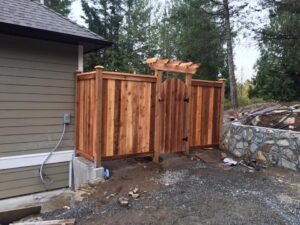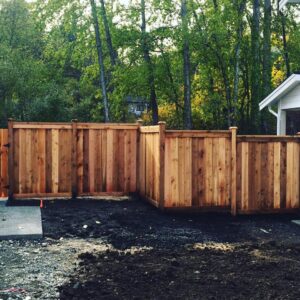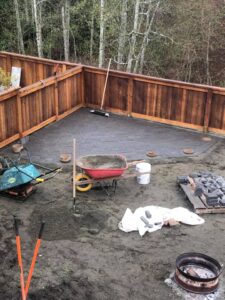When it comes to installing a fence, you’re choosing more than just a boundary—you’re deciding on aesthetics, durability, and maintenance. Wood and vinyl fences each have unique advantages and drawbacks that can impact your lifestyle and property. Which one truly fits your needs and expectations?
Key Takeaways
- Wood fences offer natural beauty and can be customized to match various design styles.
- Vinyl fences require little upkeep and resist rot, warping, and harsh weather.
- Costs differ: wood is cheaper upfront but needs regular maintenance, while vinyl has higher initial costs but saves in the long run.
- Environmental impact varies: wood is biodegradable and can be sustainably sourced; vinyl is durable but not biodegradable.
- Installation is easier with vinyl’s pre-made panels, while wood requires more detailed work.
Overview of Wood Fences
Wood fences are a timeless option for homeowners who want beauty and function.
You’ll find options like cedar, pine, and redwood—each with its own strengths. Cedar resists rot naturally, and pine is budget-friendly. Styles like picket, privacy, and split rail serve different needs, whether for charm, privacy, or a rustic touch.
Wood fences allow for personal touches, giving you flexibility in design while supporting your home’s overall appeal.
Overview of Vinyl Fences
Vinyl fences are a modern alternative, known for being strong and low-maintenance.
They resist rot, pests, and fading, so you won’t need to paint or stain them regularly. Vinyl also installs quickly thanks to pre-made panels and lightweight materials. Plus, you’ll find plenty of design and color choices to suit your style.
If you want a clean look with minimal upkeep, vinyl could be a great option.
Aesthetic Appeal: Wood vs. Vinyl
Wood brings warmth and natural texture, making it ideal for classic or rustic styles. Its unique grain and color add character.
Vinyl, on the other hand, offers smooth finishes and a uniform appearance. Some vinyl options mimic wood grain for added charm while still fitting modern or minimal design preferences.
Choose wood for its authentic beauty or vinyl for a polished, consistent look.
Durability and Longevity
Both materials offer solid protection, but they differ in how long they last.
Vinyl resists weather damage, fading, and insects, making it extremely durable with little upkeep. Wood, while strong, can warp or rot over time if not properly maintained.
If you want a fence that lasts decades with less care, vinyl usually wins. Wood may need more maintenance but offers a different kind of charm.
Maintenance Requirements
Wood Fence Upkeep
Wood fences need regular care—staining, sealing, and checking for pests or rot. Seasonal cleaning and inspections are key to keeping them in good shape. In winter, remove snow buildup to prevent damage.
Vinyl Fence Care
Vinyl is much easier to maintain. A simple wash with soap and water keeps it clean. For stubborn stains, try vinegar and water. Check occasionally for cracks or loose panels and fix them early.
Cost Considerations
Wood is cheaper to install but comes with ongoing maintenance costs.
Vinyl is more expensive upfront, but its durability and low maintenance can save money over time. Think about your budget now and how much you want to spend on upkeep in the future.
Environmental Impact
Sustainability of Materials
Wood can be a green option if it’s sustainably harvested—look for FSC-certified wood. Vinyl, made from PVC, isn’t biodegradable and uses petrochemicals, though it can sometimes be recycled.
Lifespan and Decomposition
Wood breaks down naturally but has a shorter lifespan. Vinyl lasts longer but doesn’t decompose, contributing to landfill waste. Your choice affects both the planet and how often you’ll need to replace your fence.
Installation Process
Wood fences usually take longer to install. Each panel and post must be set individually, requiring more time and tools.
Vinyl panels are pre-made and easier to assemble, reducing labor and making them more DIY-friendly. If you’re short on time or experience, vinyl might be the simpler route.
Customization Options
Wood offers nearly unlimited design possibilities—you can paint, stain, or carve it to match your home.
Vinyl has more fixed design choices, though decorative features like post caps or lattice tops add flair. Choose based on how personalized you want your fence to look.
Resale Value and Property Impact
A well-maintained wood fence adds charm and curb appeal, especially for buyers who value classic style. But upkeep may be a downside for some.
Vinyl appeals to those looking for a long-lasting, low-maintenance solution, which can also raise your home’s value.
Understand what buyers in your area want—natural aesthetics or convenience—and choose accordingly.
Frequently Asked Questions
How Do Wood and Vinyl Fences Compare in Terms of Noise Reduction? Wood absorbs sound better, but both offer privacy. Vinyl blocks sound but doesn’t absorb it as well.
Can Vinyl Fences Withstand Extreme Weather Conditions Better Than Wood? Yes. Vinyl resists wind, rain, snow, and sun better than wood, which can warp or rot.
Are There Color Options for Wood Fences Beyond Staining? Absolutely. You can paint wood fences any color or use decorative finishes.
What Is the Average Lifespan of a Wood Fence Versus a Vinyl Fence? Wood lasts 10–15 years with care. Vinyl can last 25–30 years or more with minimal maintenance.
Do Wood Fences Attract Pests More Than Vinyl Fences? Yes. Wood is organic and can attract termites or ants, while vinyl isn’t affected by pests.
Conclusion
Choosing between wood and vinyl fences depends on your style, budget, and how much maintenance you’re willing to do.
If you love natural charm and don’t mind regular upkeep, wood is a great fit. If you prefer something long-lasting and easy to care for, go with vinyl. Consider what matters most to you—appearance, durability, cost, or sustainability—and pick the fence that best fits your home and lifestyle.
